Nowadays, almost every domesticated guinea pig is fed with pellets, partly because of accessibility, but mostly with the help of advertising. People now believe that pellets are a granted part of a guinea pig’s meal. But how much of that is true?
Pellets were created for industrial farming because they’re an easy and cheap alternative to natural foods. Guinea pigs in the wild would ideally eat grasses, herbs, twigs, leaves, and bark.
Obviously, a pet owner can’t provide the small animal with the same diet that it would have in the wild. So, are pellets the necessary alternative?
Do guinea pigs need pellets? Guinea pigs don’t necessarily need pellets. They can get similar benefits from foods in their natural form. However, most pellets such as alfalfa or Timothy hay-based are mixed with multiple ingredients and supplements that are significant to the health of certain guinea pigs.
This article will discuss in detail if pellets are important for guinea pigs and how much pellets do they need, types of pellets, healthy guinea pig’s diet, foods, and nutrients needed by your pet!
Table of Content
Are Pellets Good for Guinea Pigs?
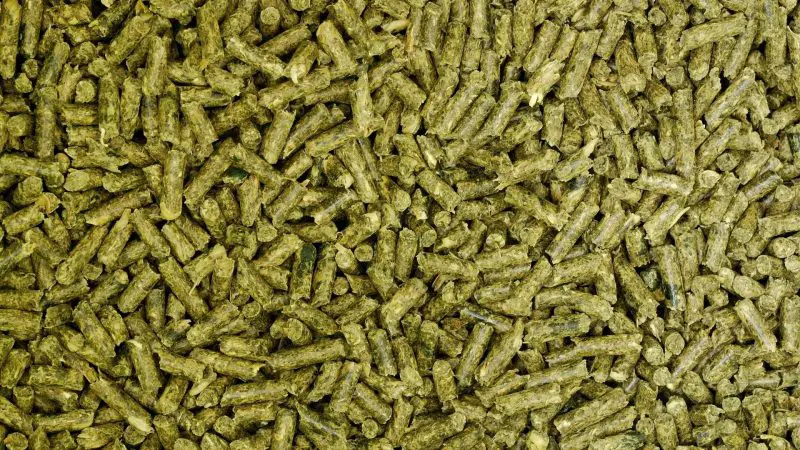
Pellets are good for guinea pigs but it is actually not necessary. Nutrients in these pellets can be found in foods in their natural form. However, pellets can be fed to your cavy together with grass or hay.
Fresh vegetables should also be included in their meal several times a week. But always remember to include vitamin C-rich foods in their everyday diet!
Moreover, alfalfa or Timothy hay-based pellets are essential for pregnant guinea pigs and young cavies, as it is rich in calcium.
Calcium is much needed by pregnant cavies for fetal skeleton and milk development. On the other hand, young guinea pigs need calcium for bone growth.
What Are the Types of Pellets?
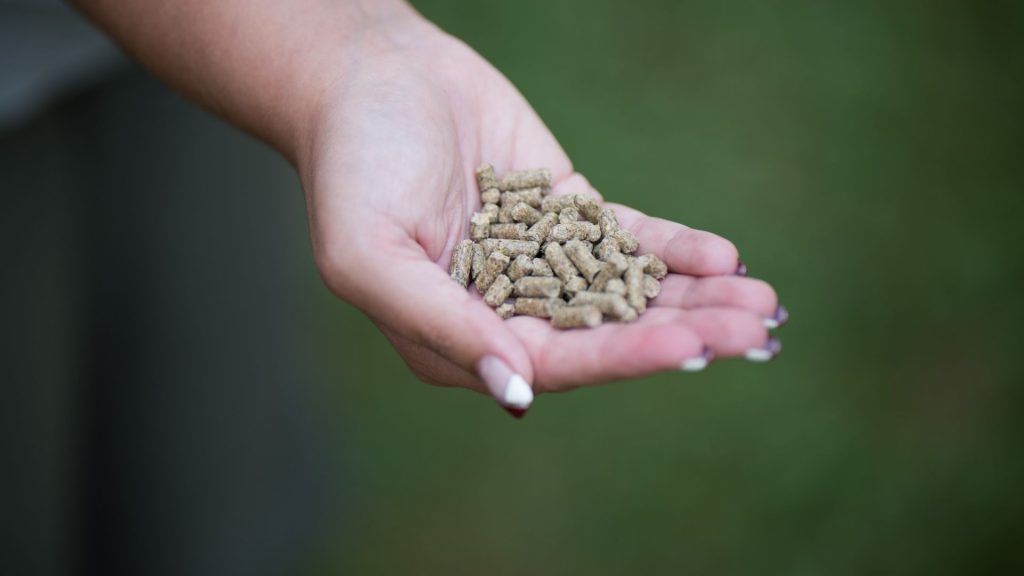
Here are the types of guinea pig pellets:
- Grain pellets (wheat and rye): These pellets are very dense and slow down digestion.
- Gluten-free pellets (quinoa, millet, buckwheat): These are better for digestion but not common.
- Heat-pressed pellets: This type of pellets lose their vitamins, so manufacturers add them artificially – at times adding so many that they become harmful rather than beneficial.
- Cold-pressed pellets: They retain their vitamins and fibers because they’re not subjected to high temperatures.
- Fresh/natural pellets: These are the healthiest and are composed of grasses, plants, and herbs. They have a high calcium and water content, and any excess is flushed out in urination.
Certain types of pellets absorb water in the stomach and cause swelling, preventing liquids from reaching the bladder and kidneys and therefore opening the door to complications. These sorts of pellets should only be syringe-fed in small amounts.
Contrarily to hay and grass, pellets aren’t fibrous enough to keep guinea pigs’ teeth trimmed. They satiate so much that the guinea pig doesn’t eat all the fibrous plants and vitamins that it needs.
A guinea pig that consumes them should be weighed weekly to ensure that it’s maintaining a healthy weight.
Can You Feed Guinea Pigs Pellets Alone?
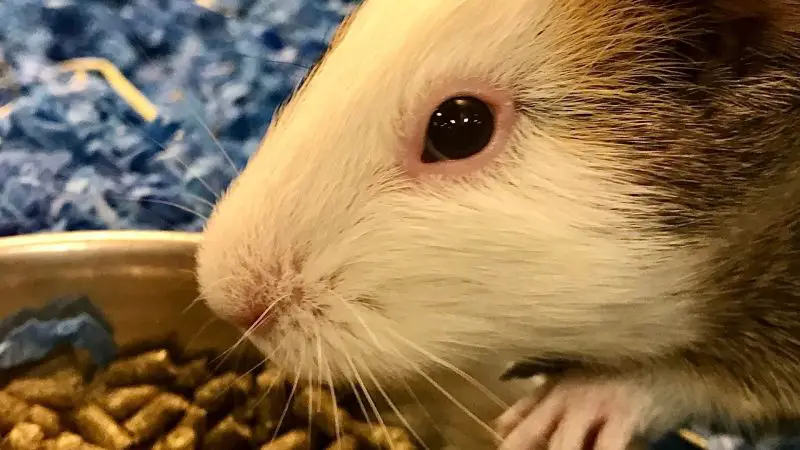
You cannot just feed guinea pigs with pellets alone. Pellets are only needed as an additive to an already rich diet.
Pellets also tend to lose vitamin C and other nutrients in the long run, so it is advisable to buy in small amounts and to consume it early.
Vitamins and minerals are everyday essential to cavy, especially vitamin C. Guinea pigs cannot produce this vitamin, so they rely on foods and other supplements.
How Much to Feed Guinea Pigs With Pellets?
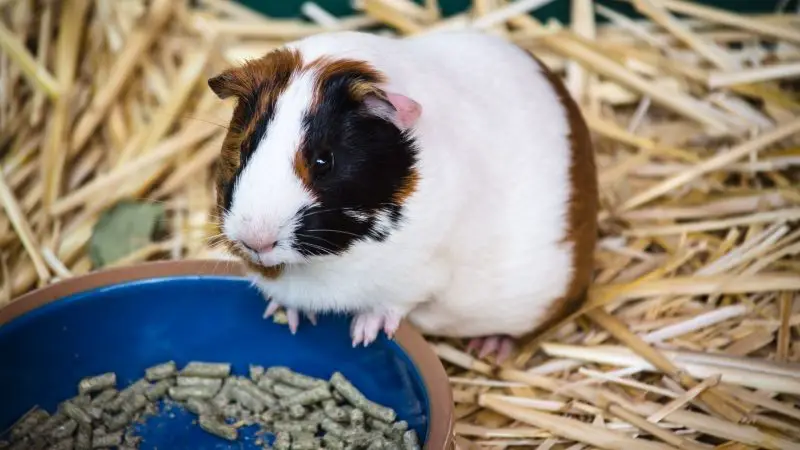
Guinea pigs can be fed with 1/8 cup of pellets a day. As mentioned above, it should be a properly balanced meal accompanied by grass or hay, other vitamin C-rich foods, and serving fresh vegetables a few times a week.
Treats such as fruit can be served but in moderation and in small amounts, as it is high in sugar that can be harmful to guinea pigs.
Note that guinea pigs should also have constant clean water access daily, needed to the overall functions of the body.
Healthy Guinea Pig Diet | Facts and Tips
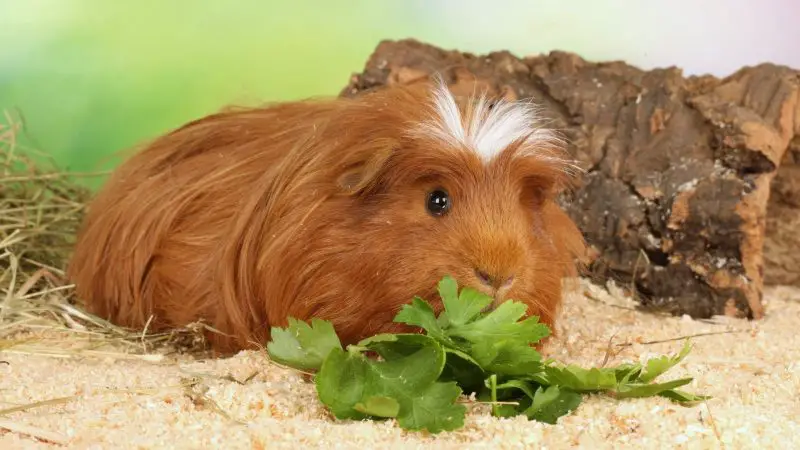
Here are some facts and tips about guinea pig’s diet:
- A guinea pig’s diet should consist of high-quality grass hay (orchard grass, timothy hay, oat), a limited amount of pellets, and some fresh vegetables.
- Guinea pig requires 110 – 220g (1/2 – 1 cup) of leafy greens rich with vitamin C per day, as it cannot synthesize the vitamin and will die of deprivation.
- Pregnant piggies and babies under 6 months should have an unlimited supply of alfalfa as its high in calcium and proteins, which they need to grow or lactate.
- Guinea pigs should not be fed with dried fruits, nuts, grains, seeds, cereals, or sugars. High carb diets may cause gastrointestinal problems and obesity.
- The guinea pigs depend on routine and habits to feel good. Avoid making any sudden changes in food, feeding times, or containers, otherwise, the piggy might get stressed and refuse to eat. Any changes should be done gradually.
- Water bottles with sipper tubes are better than bowls for guinea pigs because they can’t be tipped over or soiled. Still, the piggies tend to chew on the end of the tube or clog it by spitting food into it. Therefore, water containers have to be cleaned and refilled every day. It’s not recommended to add any extra vitamins because many guinea pigs don’t like the taste and may drink less.
Foods and Nutrients Needed by Guinea Pigs
Below are important foods and nutrients needed by guinea pigs for a healthy diet:
Vitamin C
Although pellets are usually formulated with vitamin C, it degrades quickly – pellets should be fed up to 90 days after the production date. Besides, not all vegetables and vitamin supplements are sufficient.
Basically, guinea pigs require vegetables rich in vitamin C in addition to pellets. Otherwise, they may develop scurvy.
Scurvy is a disease caused by vitamin C deficiency. Characterized by blood problems and an inability to create collagen, the illness can be lethal.
Collagen is needed to maintain blood vessels, bone formation, and wound healing. Vitamin C deficiency has several effects on the guinea pig such as the following:
- Fragile blood vessels – translates to fragile tissues, especially in the gums, mouth, skin, muscles, and organ surfaces. Some signs are bruising or bleeding of the skin or gums, and a decreased appetite since teeth get loose in their sockets.
- Wrong bone and cartilage formation – especially around leg and rib joints. Symptoms are swelling, lameness, stiffness, and joint pain.
- Diarrhea that results in weight loss, rough hair coat, no sexual stimulus, weak and lethargic piggy.
The first step of treating scurvy is to change the guinea pig’s diet (with professional guidance). Lighter cases of the illness can be treated at home. In some cases, piggies require hospitalization. They will receive vitamin C injections, fluid therapy, pain medication, and nutritional support.
Furthermore, to avoid unwanted bruising or injuries, limit physical activity for at least the first week of treatment. Gradually allow activities as the piggy’s health improves.
Hay and Grass
An unlimited supply of clean and fresh alfalfa or Timothy hay is an essential component of a healthy guinea pig’s diet. The small animal chews on it constantly, as its extremely beneficial:
- Hay helps break down food in the digestive system, protecting the piggy from diarrhea.
- Also, hay keeps their teeth trimmed. Guinea pig teeth grow constantly, and without something tough to chew on, their teeth will get too big for their mouths. Hard vegetables are a good alternative when trimming.
- Guinea pigs like using hay as bedding as they chew on their own mattress at night.
Note: It’s recommended to use a large hayrack rather than spreading hay on the floor of the cage. Guinea pigs often soil themselves and spill water on the ground, which would make the hay soggy and dirty.
On the other hand, a loved, seasonal guinea pig food is fresh grass. It’s rich in vitamin C and nutrients, abundant in spring and summer, but not so much during the rest of the year.
A guinea pig should either run in a garden or receive grass pulled out by hand every day. After one to two hours, any of it should be thrown away. Whoever feeds the piggy should double-check that the grass hasn’t been sprayed with herbicides.
Fruits and Vegetables
Fruits and Vegetables
In order to get enough vitamins and minerals, domesticated guinea pigs should be fed easy-to-digest fruits and vegetables in strict quantities. Piggies generally don’t enjoy change, but they do like to have a varied diet.
Guinea pigs should consume three to five different types of vegetables per day. Fruits have high sugar content, so they should be given only once or twice a week to avoid fattening the piggy. Many say that a portion should be about the size of a matchbox.
To serve this, wash fruits and vegetables thoroughly, dry them, and remove any seeds or pips. Finally, cut them up into bite-sized chunks to avoid choking the piggy.
Treats
When it comes to guinea pigs, treats are simply foods that they really enjoy eating. Piggies don’t crave sugary (or any kind) treats like humans do. Honestly, they don’t even enjoy chocolate and cake that much and will probably get sick and fat if they eat them.
Besides fruits, guinea pigs love the occasional fruit tree twig. Once in a while, an owner can even give a piggy a vitamin C tablet as a treat – but only rarely.
Guinea pigs should never consume human food, especially meat or potatoes. They can’t process pastries, dairy, chocolate, or anything deriving from an animal.
Nuts, seeds, cereals, and crackers aren’t recommended as they can harm the guinea pig’s mouth or cause stomach problems.
Guinea pig ‘treat sticks’ shouldn’t be bought either, as they consist mostly of nuts and seeds. The truth is that most store-bought treats are completely unnecessary and even harmful.
Any treats that the guinea pig receives should be natural, healthy, enjoyable, and occasional.
Here is a video about fruits as a treat that guinea pigs can eat:
Summary
Pellets are not as necessary as manufacturers make them out to be. There’s no black-and-white answer as the whether they’re needed because it truly depends on the rest of their diet and their general health.
Guinea pigs have to consume hay (alfalfa or timothy) and vegetables on a daily basis to survive. Fresh, herbicide-free grass is a wonderful meal for the spring and summer.
It’s essential to ensure that a guinea pig gets all the vitamin C that it needs per day. Scurvy is a vitamin C deficiency disease, and it is extremely unpleasant and possibly lethal.
The occasional fruit is a great treat. Although piggies enjoy them, treats are not a required part of their diet. As long as the guinea pig is fed appropriately and is happy and healthy, owners have nothing to worry about.
Related: 7 Best Guinea Pig Pellets: Brand Reviews and Quality Guide
